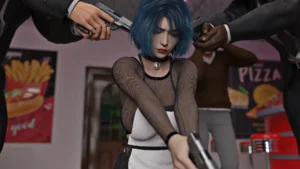
The Restaurant
Play The Restaurant
The Restaurant review
Master gameplay mechanics, build your dream eatery, and unlock all features
The Restaurant is an engaging simulation game that puts you in charge of building and managing your own dining establishment from the ground up. Whether you’re a casual gamer looking for a relaxing experience or someone seeking strategic depth, this game offers compelling mechanics that blend resource management with creative decision-making. In this guide, we’ll explore everything you need to know to build a thriving restaurant empire, from initial setup to advanced strategies that will help you maximize profits and customer satisfaction.
Getting Started: Restaurant Basics and Core Mechanics
Welcome to the most exciting part of your culinary journey! 🎉 Diving into The Restaurant for the first time can feel a bit overwhelming—I remember staring at the screen, utterly paralyzed by choice. Should I buy tables first? Or hire a chef? My first virtual eatery was a beautiful disaster, with customers waiting forever while I frantically tried to figure out the menus. But don’t worry, I’ve made the mistakes so you don’t have to. This guide will walk you through the absolute essentials, transforming you from a flustered newbie into a confident restaurateur. Let’s master The Restaurant game mechanics together and lay the foundation for your empire. 🏗️
Understanding the Game Interface and Menu Systems
When you first load up The Restaurant, the screen is a vibrant hub of activity. 🖥️ Think of the interface as your restaurant’s command center—every button and icon is a tool for building your dream. The main screen shows your dining area, but the real magic happens in the menus tucked around the edges.
On the bottom of your screen, you’ll find the primary navigation bar. This is your best friend! From left to right, you have:
* Build Mode (The Hammer Icon) 🔨: This is where you place tables, chairs, decorations, and kitchen equipment. It’s your creative playground.
* Staff Management (The People Icon) 👨🍳: Hire, train, and assign tasks to your waiters and chefs. Your team is the heart of your operation.
* Menu & Recipes (The Book Icon) 📖: Design your culinary offerings. This is where you set prices and unlock new, mouth-watering dishes.
* Inventory & Suppliers (The Crate Icon) 📦: Check your stock of ingredients and manage your supply chain. Running out of tomatoes during a lunch rush is a nightmare I wish upon no one!
* Finance & Stats (The Graph Icon) 📊: Keep a close eye on your earnings, customer satisfaction, and daily reports. Knowledge is power (and profit!).
On the top bar, you’ll see your vital resources displayed clearly: your Currency, Action Points (AP), and Shopping Points (SP). Tapping on these will often bring up sub-menus for purchasing or recharging. This game interface tutorial is all about familiarity. Spend your first few minutes just clicking around. There’s no penalty for exploration, and it will save you from the panic I felt when I accidentally fired my only chef! 😅 Getting comfortable here is the first step to mastering the restaurant simulation gameplay.
Managing Resources: Currency, Points, and Inventory
This is the core of your strategy. Resource management in restaurant games is what separates thriving establishments from bankrupt ones. Let’s break down the three key resources you’ll be juggling.
Currency (Cash)
This is the money you earn from serving happy customers. 💵 It’s used for almost everything: buying new furniture, expanding your space, paying staff salaries, and purchasing ingredients. Early on, cash is tight, so every dollar counts. My biggest early mistake was blowing all my starting cash on fancy wallpaper instead of essential kitchen upgrades. Don’t be like me!
Action Points (AP) and Shopping Points (SP)
This action points and shopping points guide is crucial for your progress. AP is the energy that fuels your daily tasks. Every action, from serving a table to cleaning, consumes AP. When it runs out, your service grinds to a halt until it slowly recharges.
SP is your special currency for buying unique items, speeding up processes, and, most importantly, triggering special events. 🎁 Here’s a pro tip I learned the hard way: always try to keep a minimum of 40 SP on hand. Many of the game’s most rewarding events and surprise sales require you to have this threshold available. Letting your SP drop to zero means missing out on huge opportunities for growth.
Inventory
Your inventory is a direct pipeline from your suppliers to your customers’ plates. You must ensure a steady flow of ingredients like meat, vegetables, and grains. A balanced inventory prevents waste and maximizes profit. If you over-order, food spoils and cash is lost. Under-order, and you have to turn customers away. It’s a delicate dance!
To help you keep track, here’s a quick reference table for managing these core systems:
| Game Phase | SP Recommendation | Common AP Uses | Cash Priority |
|---|---|---|---|
| Early Game (Day 1-5) | Save to 40+ | Basic serving, initial upgrades | Essential equipment, 1-2 staff |
| Mid Game (Expansion) | 40-60 for events | Advanced recipes, marketing | Space expansion, staff training |
| Established Restaurant | 60+ for all opportunities | Mass customer management | Luxury decor, premium suppliers |
🧠 Personal Insight: I used to spend my SP as soon as I got it on small, instant rewards. Once I started hoarding it to the 40-mark, my progress accelerated dramatically. Patience with SP is one of the most valuable The Restaurant beginner tips I can give you.
Your First Restaurant: Initial Setup and Early Decisions
Knowing how to start The Restaurant game correctly sets the tone for your entire playthrough. Your initial choices are the building blocks of your future empire. 🧱
First, you’ll be asked to choose a restaurant theme. While the fancy French bistro is tempting, I strongly recommend starting with a simpler concept, like a diner or a café. These themes have cheaper ingredients and faster cooking times, which are perfect for learning the The Restaurant game mechanics without too much pressure.
Your starting capital is limited, so spend it wisely. Here’s your priority shopping list:
1. Essential Kitchen Equipment: You can’t cook without stoves and prep stations! This is non-negotiable.
2. Adequate Seating: Start with 3-4 tables. Any more and you’ll overwhelm your tiny kitchen; any fewer and you won’t make enough money.
3. Your First Employee: Hire one waiter before you hire a second chef. A good waiter can manage multiple tables, keeping customers happy while your sole chef focuses on cooking.
⚠️ Classic Beginner Mistake: Do not take out the high-interest loan the game offers you early on! It seems like a quick cash fix, but the repayment will strangle your cash flow for days. Grow organically instead.
Focus on mastering a small menu of 3-4 dishes. This simplifies your inventory and allows your chef to level up faster by repeating the same recipes. As you earn more and understand the flow of restaurant simulation gameplay, you can gradually expand your menu and your space. Remember, a smooth-running, profitable small restaurant is far better than a large, chaotic, and bankrupt one. Your goal in these first few hours is to establish a positive cash flow loop: customers come in, you serve them efficiently, you earn money and points, and you reinvest to improve. 🔄
Frequently Asked Questions
What should I do if I run out of Action Points (AP) early on?
This is very common! When your AP is depleted, it will recharge slowly over time. Use this waiting period to your advantage. This is the perfect moment to dive into the build menu and plan your next layout expansion, or analyze your financial reports to see which dishes are your most profitable. Think of it as a forced “manager meeting” time.
I’m always running out of ingredients. What am I doing wrong?
This usually means your menu is too large or your supplier level is too low. Stick to a smaller menu initially so you only need to stock a few types of ingredients. Also, check your supplier in the inventory menu—upgrading them, even once, significantly increases the amount of ingredients they deliver, reducing the frequency of orders.
How do I get more Shopping Points (SP) quickly?
The most reliable way to earn SP is by completing daily goals and achievements, which are listed in the mission menu. Serving customers also has a small chance of rewarding a few SP. The key is consistency; log in daily to check and complete your simple goals.
Why are my customers so slow to leave, creating a queue?
This is often a decoration issue. Customer “comfort” is a hidden stat affected by the decor and spacing in your restaurant. If your place looks bare and cramped, customers will linger even after they’ve finished eating. Adding some plants, art, and ensuring there’s space between tables will make them happier and encourage them to leave faster, freeing up tables for new patrons. This is one of those subtle The Restaurant game mechanics that has a huge impact.
The Restaurant offers a rewarding blend of simulation and strategy that appeals to players of all skill levels. From mastering the basics of resource management to implementing advanced revenue strategies, there’s always something new to discover. Whether you’re perfecting your signature Miso Ramen or orchestrating complex event sequences, the key to success lies in understanding the game’s interconnected systems and adapting your approach as you progress. By applying the strategies outlined in this guide, you’ll be well-equipped to build a thriving restaurant empire and experience everything this engaging game has to offer. Start with the fundamentals, experiment with different approaches, and most importantly, enjoy the journey of creating your perfect dining establishment.






























